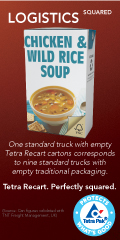
| Archives/Subscribe | www.clfp.com | Contact Us | January 7, 2014 |
Canned Foods Help You Cook Like the Pros
If you are like many Americans, you can’t get enough of those mouth-watering cooking shows where professional chefs whip up delicious meals in the span of a 30-minute show. How do they do that – and how can you replicate their cooking finesse in your own kitchen? Relying more on canned foods, which come pre-cleaned, chopped and cooked, and easily portioned, can help you quickly assemble delicious and nutritious meals like the pros. Think of them as your personal prep kitchen. But, as evidenced by a recent consumer survey, Americans are unsure of the benefits canned foods bring to the table. The fact is many professional chefs, accomplished home cooks and registered dietitians regularly incorporate canned ingredients into their recipes, so you can feel confident doing so as well. Consider these five key facts about canned foods. 1. Canned food is filled with important nutrients, including fiber, protein, and vitamins and minerals essential for a healthy diet. Yet, less than half (42 percent) of Americans surveyed realize the nutrients in canned food count toward meeting the U.S. Department of Agriculture’s dietary recommendations. So, the next time you are inspired to experiment like a pro using recipes such as tuna and black bean lettuce wraps, plan to work in a few canned ingredients to ensure you have plenty of time to enjoy the company of the family and friends gathered around your table. To learn more about the facts about canned foods and discover more great recipes featuring canned ingredients, visit www.Mealtime.org/Myths. Article provided by The Canned Food Alliance, a consortium of steelmakers, can makers, food processors and affiliate members that have joined together to promote the many benefits of canned foods. |
|
| CALIFORNIA LEAGUE OF FOOD PROCESSORS 2485 Natomas Park Dr., Suite 550 Sacramento, CA 95833 Phone: (916) 640-8150 Fax: (916) 640-8156 www.clfp.com |
 |

